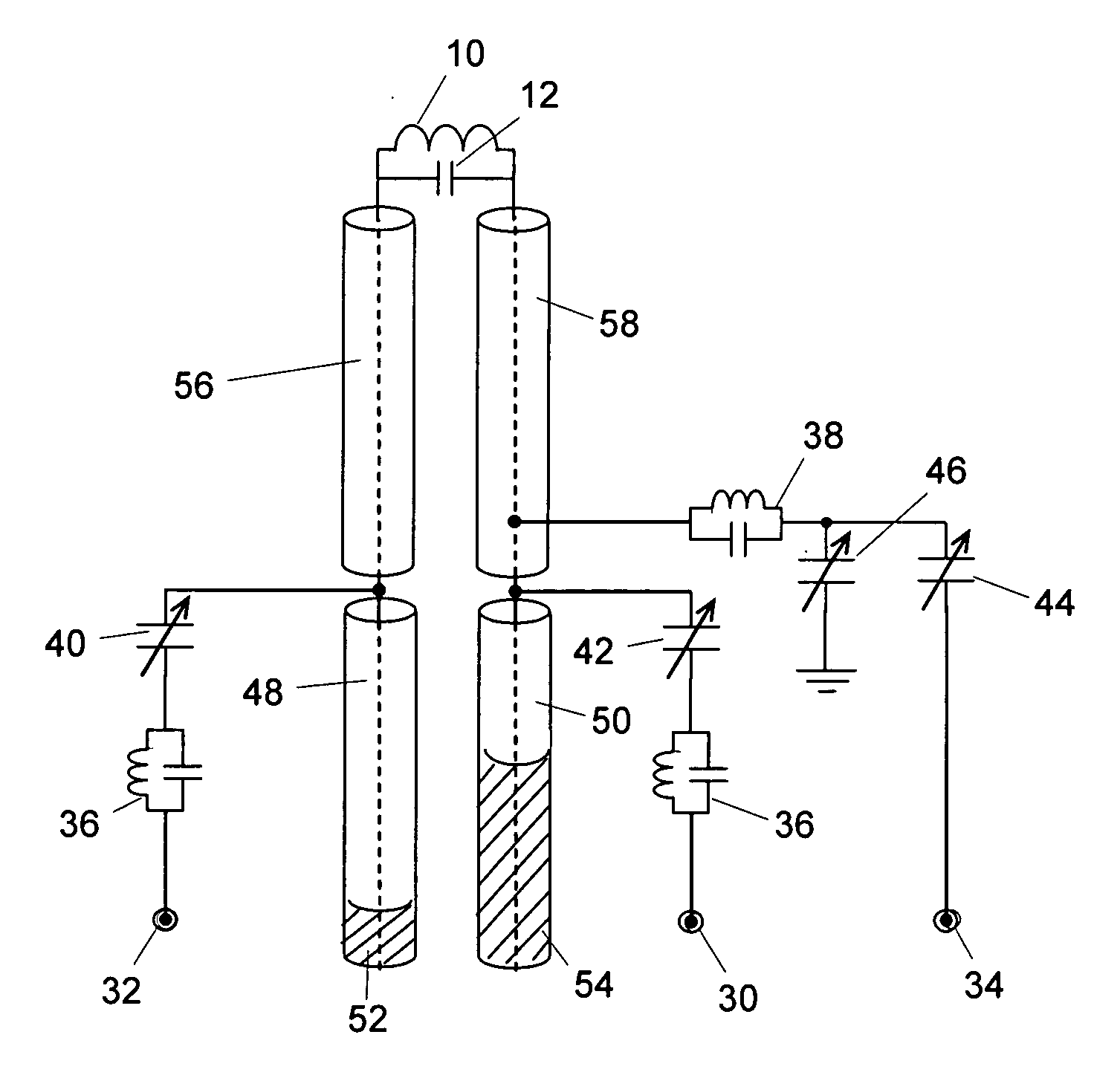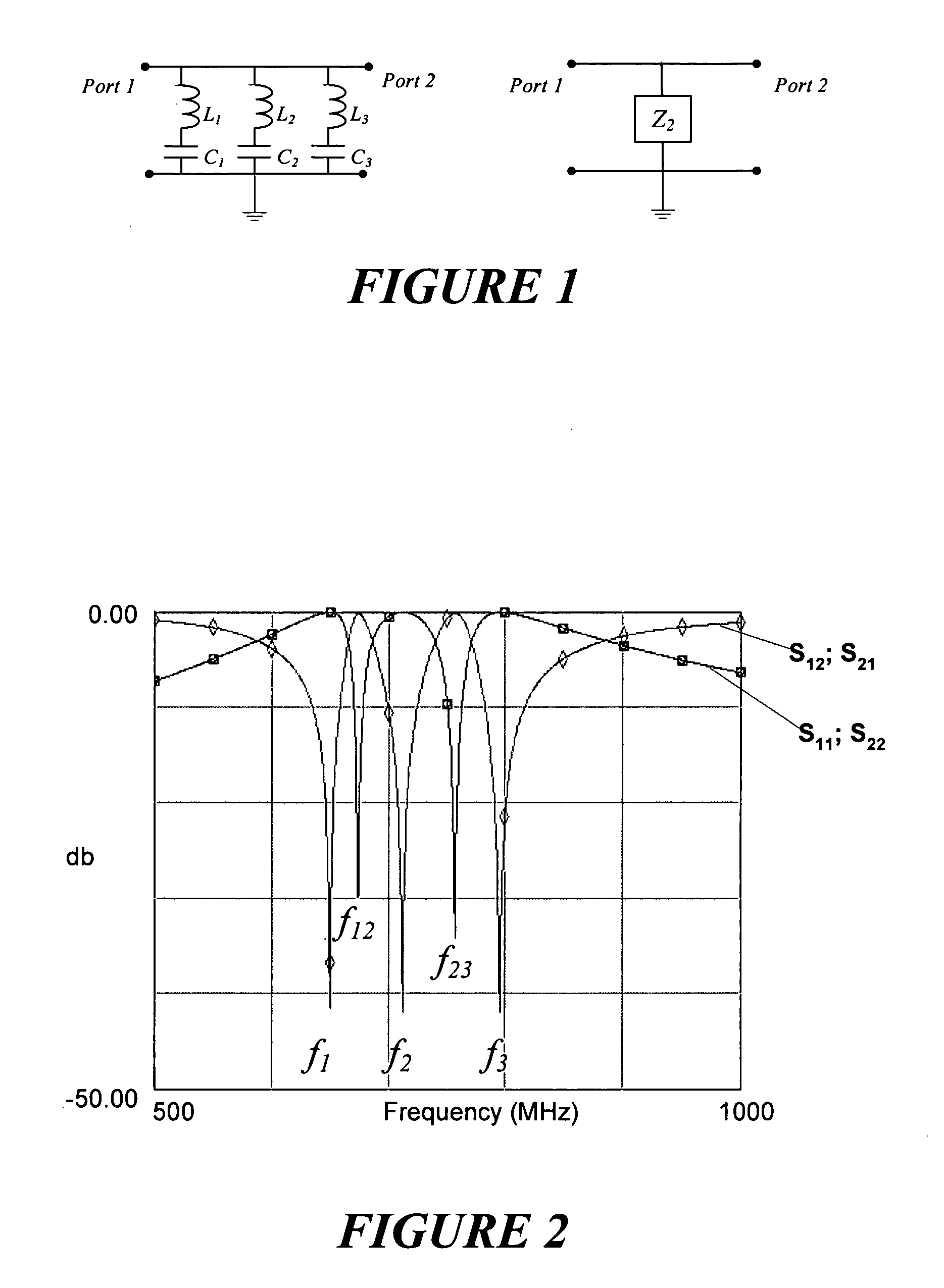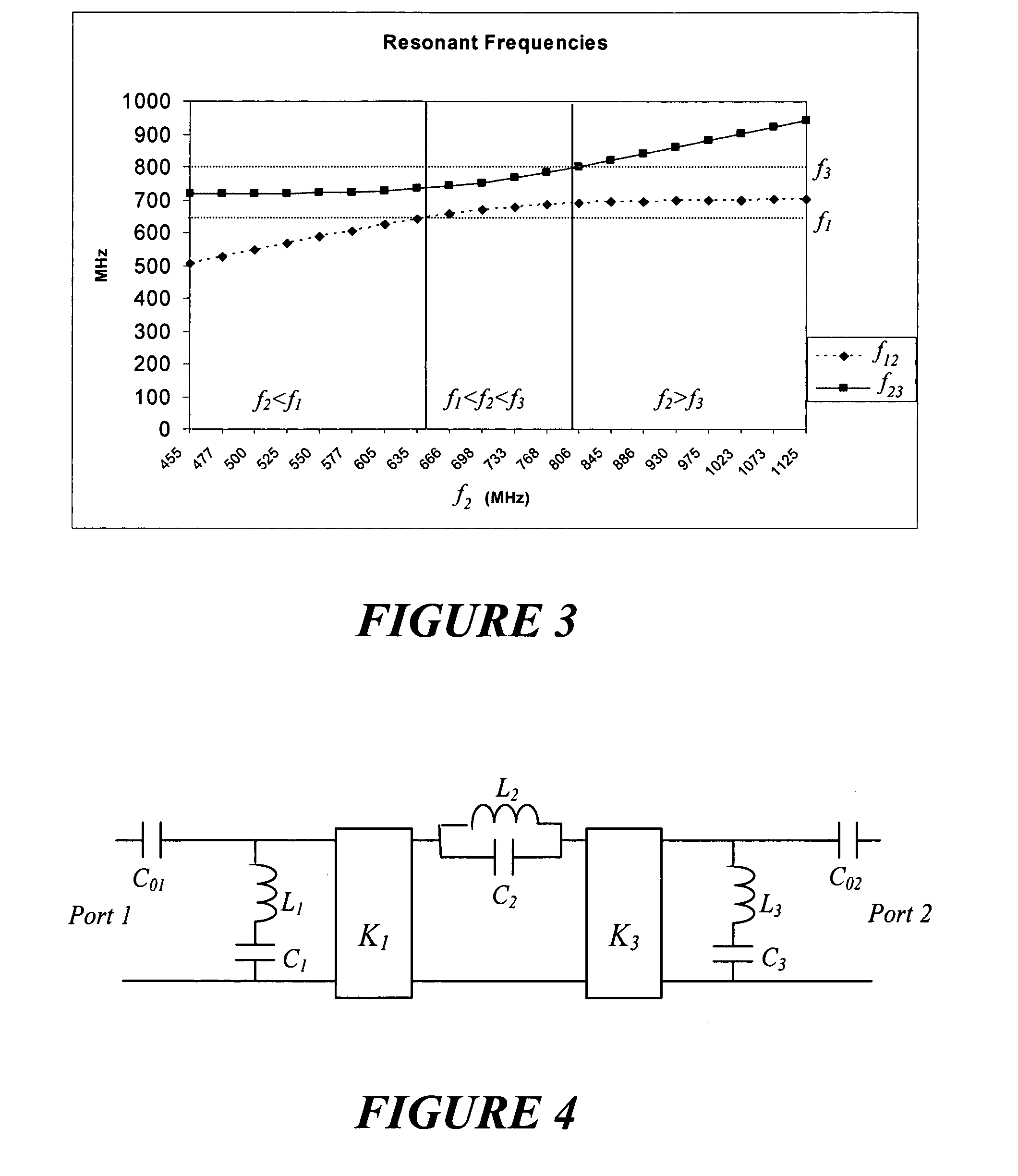NMR probe circuit for generating close frequency resonances
a probe circuit and close frequency technology, applied in the field of nmr probe circuits, can solve the problems of circuits, circuits, and inherently unbalanced, and achieve the effect of good balance and isolation
- Summary
- Abstract
- Description
- Claims
- Application Information
AI Technical Summary
Benefits of technology
Problems solved by technology
Method used
Image
Examples
Embodiment Construction
[0017]FIG. 1 shows a schematic depiction of a circuit having three parallel resonators L1C1, L2C2 and L3C3, which together may be represented as a total shunt impedance Z2. Mathematically, Z2 can be represented by the expression: Z2=j(ω2L1C1-1)(ω2L2C2-1)(ω2L3C3-1)ω(aω4+bω2+c)
where;
a=C1C2C3(L1L2+L2L3+L3L1)
b=−(L1C1C2+L1C1C3+L2C2C1+L2C2C3+L3C3C1+L3C3C2)
c=C1+C2+C3
From this, it may be seen that there are three transmission zeroes that occur, respectively, at: f1=12πL1C1,f2=12πL2C2,f3=12πL3C3(5)
Meanwhile, three transmission poles occur, one at DC and the others at: f12,f23=-b±b2-4ac8π2a(6)
Thus, the simulated resonances for this circuit may be plotted as shown in FIG. 2. In this figure, a first plot shows the frequency response as would be detected at Port 1 of the circuit in FIG. 1 when a signal is injected at Port 2 (S12), or as would be detected at Port 2 when a signal is injected at Port 1 (S21). The second plot shows the frequency response that would be de...
PUM
 Login to View More
Login to View More Abstract
Description
Claims
Application Information
 Login to View More
Login to View More - R&D
- Intellectual Property
- Life Sciences
- Materials
- Tech Scout
- Unparalleled Data Quality
- Higher Quality Content
- 60% Fewer Hallucinations
Browse by: Latest US Patents, China's latest patents, Technical Efficacy Thesaurus, Application Domain, Technology Topic, Popular Technical Reports.
© 2025 PatSnap. All rights reserved.Legal|Privacy policy|Modern Slavery Act Transparency Statement|Sitemap|About US| Contact US: help@patsnap.com



